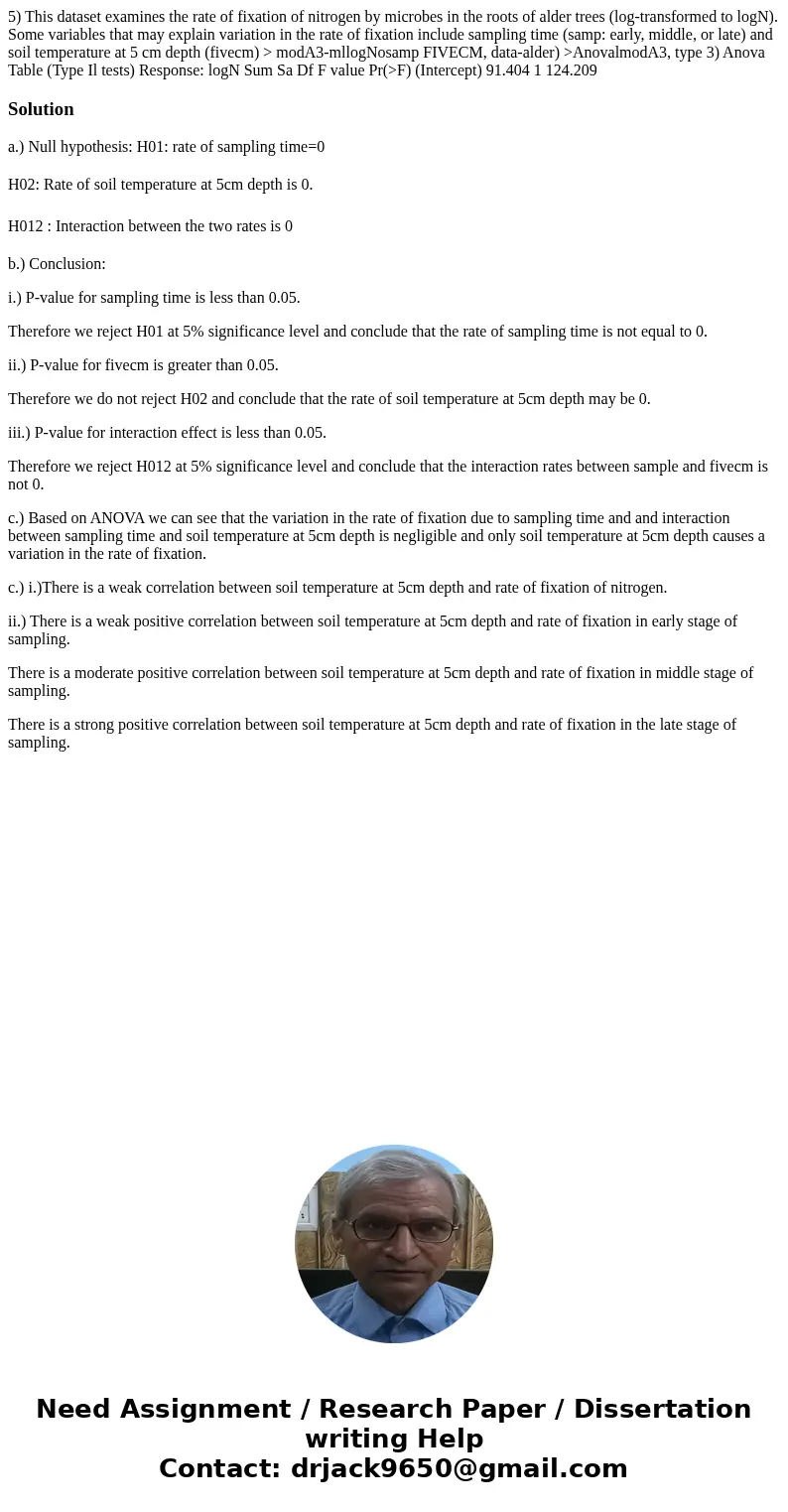5 This dataset examines the rate of fixation of nitrogen by
Solution
a.) Null hypothesis: H01: rate of sampling time=0
H02: Rate of soil temperature at 5cm depth is 0.
H012 : Interaction between the two rates is 0
b.) Conclusion:
i.) P-value for sampling time is less than 0.05.
Therefore we reject H01 at 5% significance level and conclude that the rate of sampling time is not equal to 0.
ii.) P-value for fivecm is greater than 0.05.
Therefore we do not reject H02 and conclude that the rate of soil temperature at 5cm depth may be 0.
iii.) P-value for interaction effect is less than 0.05.
Therefore we reject H012 at 5% significance level and conclude that the interaction rates between sample and fivecm is not 0.
c.) Based on ANOVA we can see that the variation in the rate of fixation due to sampling time and and interaction between sampling time and soil temperature at 5cm depth is negligible and only soil temperature at 5cm depth causes a variation in the rate of fixation.
c.) i.)There is a weak correlation between soil temperature at 5cm depth and rate of fixation of nitrogen.
ii.) There is a weak positive correlation between soil temperature at 5cm depth and rate of fixation in early stage of sampling.
There is a moderate positive correlation between soil temperature at 5cm depth and rate of fixation in middle stage of sampling.
There is a strong positive correlation between soil temperature at 5cm depth and rate of fixation in the late stage of sampling.

 Homework Sourse
Homework Sourse